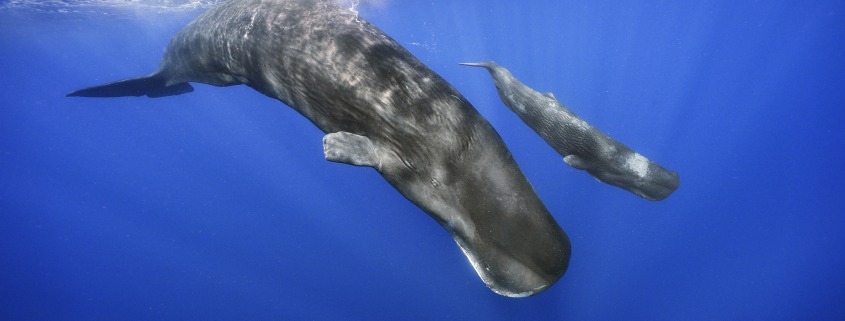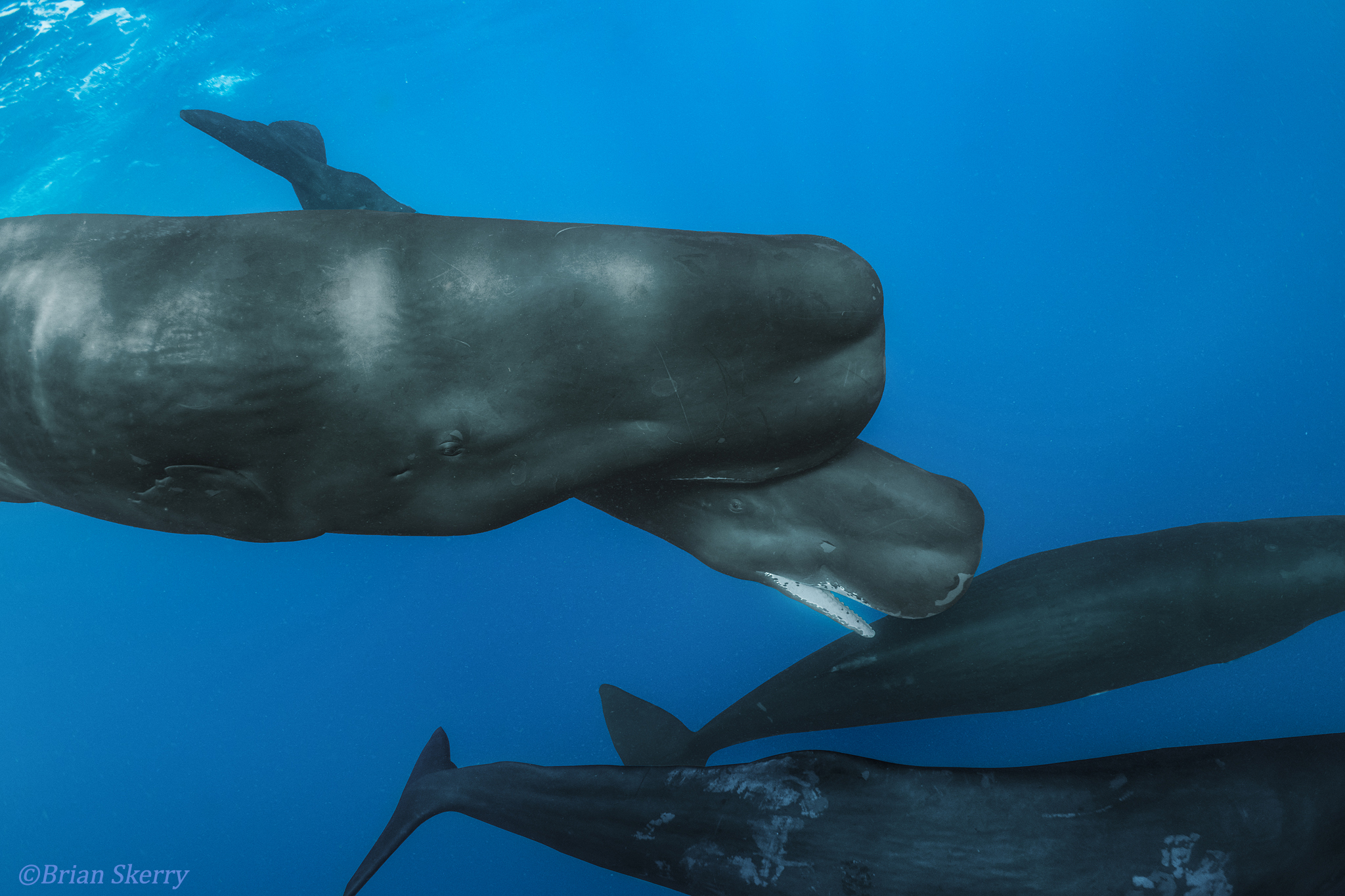The Sperm Whale
Author: Ella Lapaire
Photos: Thank you to Brian Skerry for the use of their photos.
Common Name: Sperm Whale
Scientific Name: Physeter macrocephalus
Size Range: Females range from 12 – 14 m and males range from 16 – 18 m.
Status: Endangered
Population: It is estimated that there are around 300,000 sperm whales worldwide.
Identifying Features: The sperm whale is mostly grey-brown in colour and its skin has a wrinkled texture. Their head shape is very distinctive with a square, boxy shape. The dorsal fin is set far back on its spine and takes a shape more similar to a hump than an actual fin. They have paddle like flippers used for steering and their tail flukes are in the shape of two right triangles. They range in size from 12 – 14 m (females) or 16 – 18 m (males) and tend to weigh anywhere from 25,000 kg (females) to 50,000 kg (males).
Habitat: Sperm whales are found in all oceans, however they tend to gravitate towards warmer and deeper waters. Things like food availability, breeding conditions, sex and age can have an impact on sperm whale distribution. Male whales will embark on lengthy migrations going as far north as northern Canada and Alaska, and returning to warmer waters for mating. Females, on the other hand, tend to stay in tropical waters with their calves.
Food (Prey):The majority of a sperm whale’s diet consists of giant squid however they will occasionally eat rays, octopus, and sharks. Sperm whales rely on echolocation to locate their prey in darker depths. They are capable of spending 35 min to an hour or longer underwater hunting giant squid. They will also dive as deep as 1 km below the surface in order to find their prey. More often though they will only go as deep as 400 m.
Predators: Sperm whales main predators are humans. In the past humans hunted sperm whales for the oil in their heads known as spermaceti. When sperm whales come up from a long dive they will typically spend 8 min at the surface. During these 8 min they are particularly vulnerable to attacks from whalers. Hunting of sperm whales was banned in the 1980’s. However it is suspected that at least 6,069 sperm whales were hunted and killed in BC waters between 1908 and 1967. In the wild females and calves are at risk of being attacked by orcas. In order to protect the weak, stronger whales will surround them with their heads facing in and their tails out in a flower shape. This protective formation is known as a marguerite formation. Males sperm whales have no natural predators.
Life Cycle: Female sperm whales become physically mature around 30 years of age. However they become sexually mature much sooner, at around 9 years old. Once they reach sexual maturity they are capable of having a calf every 5-7 years. After 14-16 months of gestation the calf is born and is around 13 ft in length. Calves will start to eat solid food less than 1 year after birth but will continue to nurse for many years. These females and their young tend to form social units for protection. Male sperm whales reach sexual maturity only once well into their late 20’s. They don’t become physically mature until around 50. Young males tend to form bachelor groups and older males spend most of their time alone.
Fun Facts:
- Out of all toothed whales sperm whales are the biggest.
- Sperm whales used to be hunted for an oil found in their head known as spermaceti. This oil is the origin of the whale’s name.
- Spermaceti is an oil sac found in a sperm whale’s head that helps them focus sound.
- Sperm whales have a very large brain, in fact, their brain is the largest of any living mammal.
- Sperm whales are the most widespread of all marine mammal species.
References
National Wildlife Federation. (n.d.). Sperm Whale. National Wildlife Federation. Retrieved January 17, 2024, from https://www.nwf.org/Educational-Resources/Wildlife-Guide/Mammals/Sperm-Whale
NOAA Fisheries. (n.d.). Sperm Whale. NOAA Fisheries. Retrieved January 17, 2024, from https://www.fisheries.noaa.gov/species/sperm-whale
Wild Ocean Whale Society. (n.d.). Sperm Whale – Whales and Dolphins BC. Whales and Dolphins BC. Retrieved January 17, 2024, from https://whalesanddolphinsbc.com/education-parent/sperm-whale/






Leave a Reply
Want to join the discussion?Feel free to contribute!